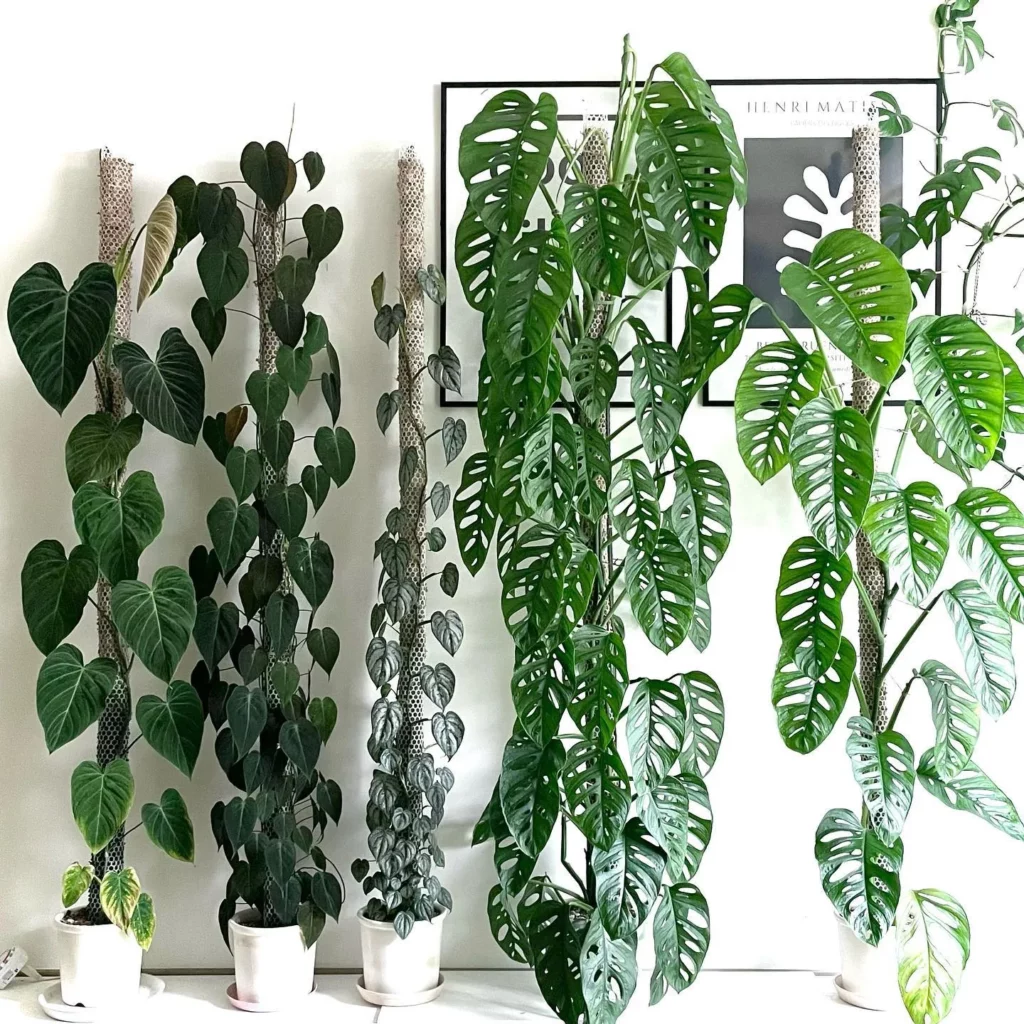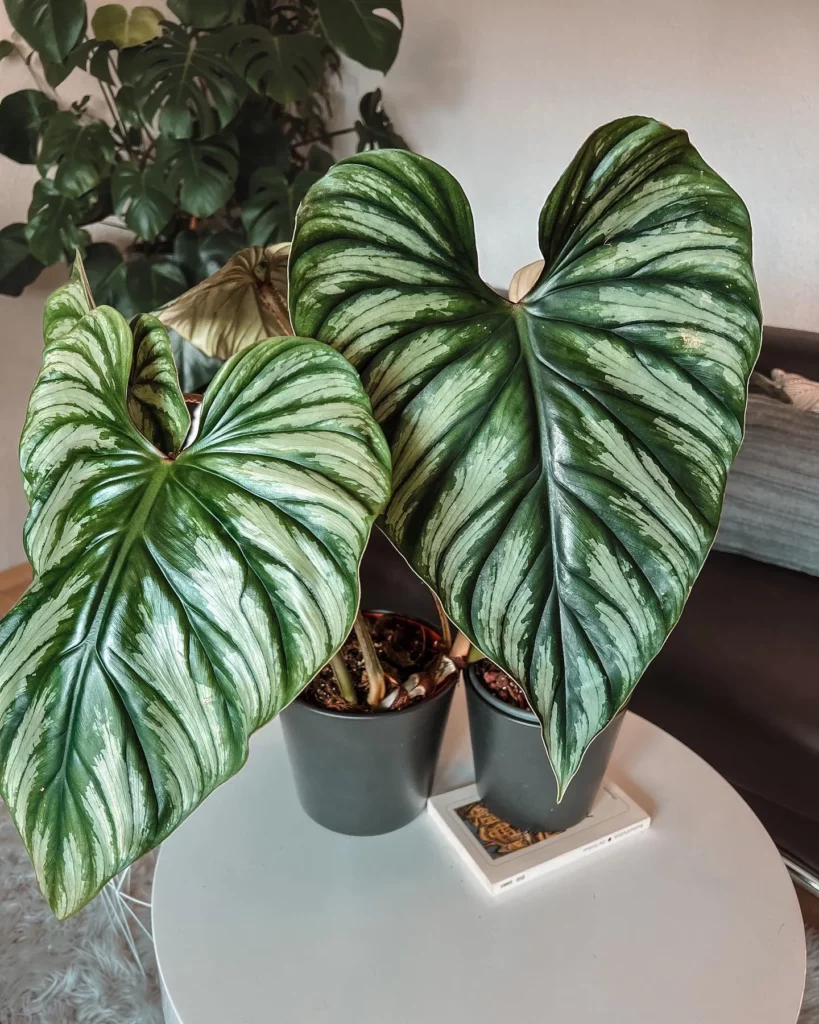Philodendrons are one of the most popular indoor plants. They have been adorning homes, offices, and commercial spaces for decades.
And it’s no surprise why – philodendrons are not only beautiful but also easy to maintain. But let me be clear: just because philodendrons are common doesn’t mean they’re boring.
In fact, these plants have a lot to offer in terms of visual appeal and variety. When you think of a philodendron, you may picture a generic, green leafy plant that’s nothing special.
Philodendron Care Tips

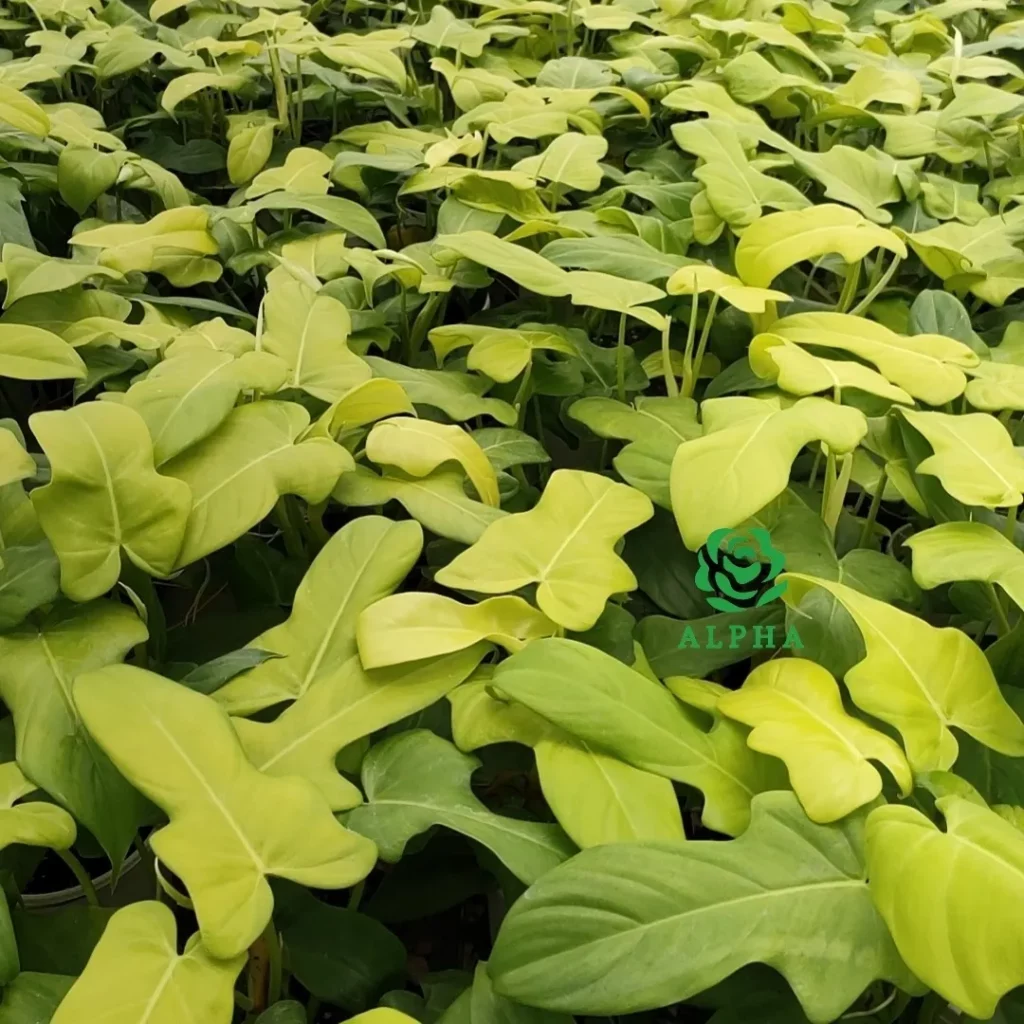

Proper care is essential for the health and vitality of your philodendrons. By following these care instructions, you can ensure that your philodendrons stay vibrant and thriving.
No products found.
Light and Humidity
Philodendrons prefer partial sun exposure and bright, indirect light for variegated leaves. They thrive in a warm, humid environment. If your home or office lacks natural humidity, you can improve it by using a humidifier or regularly misting the leaves with water. This will help mimic their natural tropical habitat and promote healthy growth.
Soil and Watering
Philodendrons prefer well-drained, loamy soil. It’s important to water them moderately, allowing the soil to dry slightly between waterings. Overwatering can lead to root rot, while underwatering can cause drooping leaves. Pay attention to the leaves as an indicator of the plant’s moisture needs.
Research Specific Care Requirements
Each philodendron variety may have specific care requirements, including sunlight and humidity preferences. It’s important to research the specific needs of your philodendron variety to ensure optimal care. This will help you provide the right conditions for your plants and prevent any potential issues.
Fertilization and Pruning
Regular fertilization can help maintain the health and vigor of your philodendrons. Use a balanced, water-soluble fertilizer according to the manufacturer’s instructions. Additionally, pruning can help control the size and shape of your philodendrons, promoting bushier growth. Trim any leggy or damaged stems to maintain a well-groomed appearance.
Best Environments for Philodendrons

Philodendrons are tropical plants that thrive in warm, humid environments. Originally found in countries such as Brazil, Venezuela, and Argentina, they are native to tropical rainforests. In their natural habitat, philodendrons can be seen climbing on trees and plants, but they can also be displayed in hanging baskets or as trailing plants.
When it comes to suitable environments for philodendrons, they prefer moderate to bright indirect sunlight and well-drained soil. They can be grown indoors in homes or offices with the right light and environmental conditions. However, it’s important to note that outdoor cultivation is also possible in climate zones 9 to 11. In colder regions, however, protection from freezing temperatures may be necessary.
Philodendrons have adapted to various environments and can be versatile when it comes to their growth. Whether you have a spacious garden or a cozy indoor space, philodendrons can thrive and add a touch of tropical beauty to your surroundings.
Habitat and Preferred Conditions
Philodendrons are native to tropical rainforests, where they enjoy warm temperatures and high humidity. This natural habitat has shaped their preferences for the ideal growing conditions. When cultivating philodendrons, it’s important to recreate a similar environment to ensure their well-being.
They thrive in temperatures between 65°F and 85°F (18°C to 29°C), with humidity levels ranging from 50% to 60%. You can increase humidity by placing the plants in a pebble tray filled with water or by using a humidifier. This helps mimic their natural rainforest environment and promotes healthy growth.
Philodendrons prefer indirect sunlight, as direct sunlight can scorch their leaves. Place them near a window with filtered light or provide them with bright, indirect light. In low-light conditions, they can still grow but may have slower growth rates and less vibrant foliage.
When it comes to soil, philodendrons favor a well-draining mix with organic matter. A combination of peat moss, perlite, and coarse sand can provide good drainage and aeration for their roots. Avoid overwatering, as excessive moisture can lead to root rot and other issues.
Overall, creating a warm, humid, and well-lit environment with well-drained soil will help your philodendrons thrive and display their lush foliage.
Philodendrons as Air Purifiers



Did you know that philodendrons can do more than just enhance the aesthetic appeal of your indoor space? These popular houseplants also have air-purifying properties, making them a great addition to your home or office environment.
Philodendrons have the ability to remove harmful toxins from the air, helping to improve indoor air quality. They act as natural humidifiers, releasing moisture into the air, which can benefit respiratory health. Additionally, philodendrons can help reduce the levels of common indoor air pollutants such as formaldehyde, benzene, and trichloroethylene.
By incorporating philodendrons into your indoor space, you can create a healthier environment for yourself and your loved ones. Not only will you enjoy the beauty and greenery that these plants bring, but you’ll also reap the benefits of cleaner, fresher air.
If you’re looking to purify the air in your home or office, consider adding philodendrons to your plant collection. These versatile plants not only add a touch of nature to your space but also contribute to a healthier and more enjoyable indoor atmosphere.
| Air-purifying qualities of philodendrons |
|---|
| Removes harmful toxins from the air |
| Acts as a natural humidifier, releasing moisture into the air |
| Reduces levels of common indoor air pollutants like formaldehyde, benzene, and trichloroethylene |
Philodendron Varieties for Outdoor Gardens
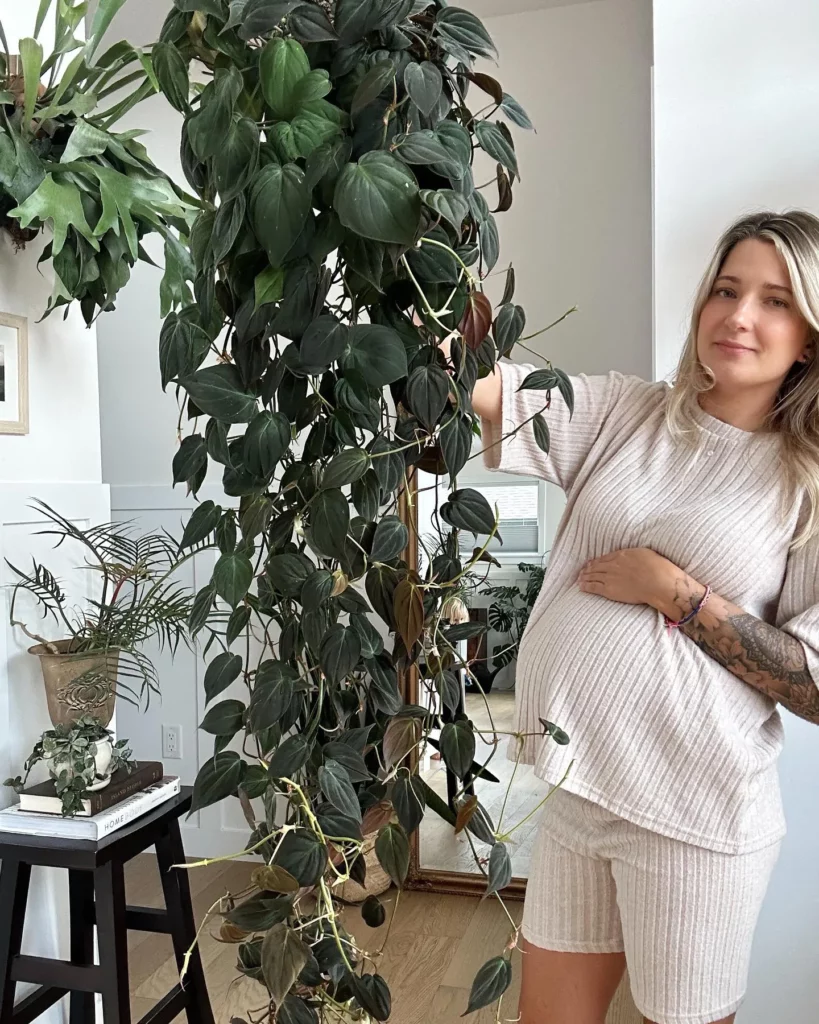
While philodendrons are popular houseplants, they can also thrive in outdoor garden settings. Certain varieties, such as the bipinnatifidum and the bipennifolium, are particularly suitable for outdoor cultivation in warmer climates. These outdoor philodendrons have the potential to grow quite large and make a captivating statement in garden landscapes.
When cultivating outdoor philodendrons, it’s important to provide them with the right conditions for optimal growth and health. Here are some key considerations:
- Well-drained soil: Outdoor philodendrons require soil that allows water to drain easily. This helps prevent waterlogging and ensures healthy root development. Loamy soil mixed with organic matter is ideal for these plants.
- Partial sun exposure: Outdoor philodendrons thrive in areas with partial sun exposure. They require a balance of sunlight and shade to prevent their leaves from scorching. Find a spot in your garden that receives a few hours of direct sunlight each day.
- Protection from extreme temperatures: Although outdoor philodendrons can tolerate warmer climates, they still need protection from extreme temperatures. Avoid exposing them to freezing temperatures, as this can cause damage to the plants.

| Variety | Common Name | Description |
|---|---|---|
| bipinnatifidum | Split Leaf Philodendron | This variety features large, deeply lobed leaves that give it a unique and tropical appearance. It can grow up to 15 feet tall and makes a stunning centerpiece in outdoor gardens. |
| bipennifolium | Horsehead Philodendron | The bipennifolium variety is known for its distinct horsehead-shaped leaves. It has a creeping growth habit and can trail along the ground or climb on supporting structures. |
Philodendron Varieties for Hanging Baskets
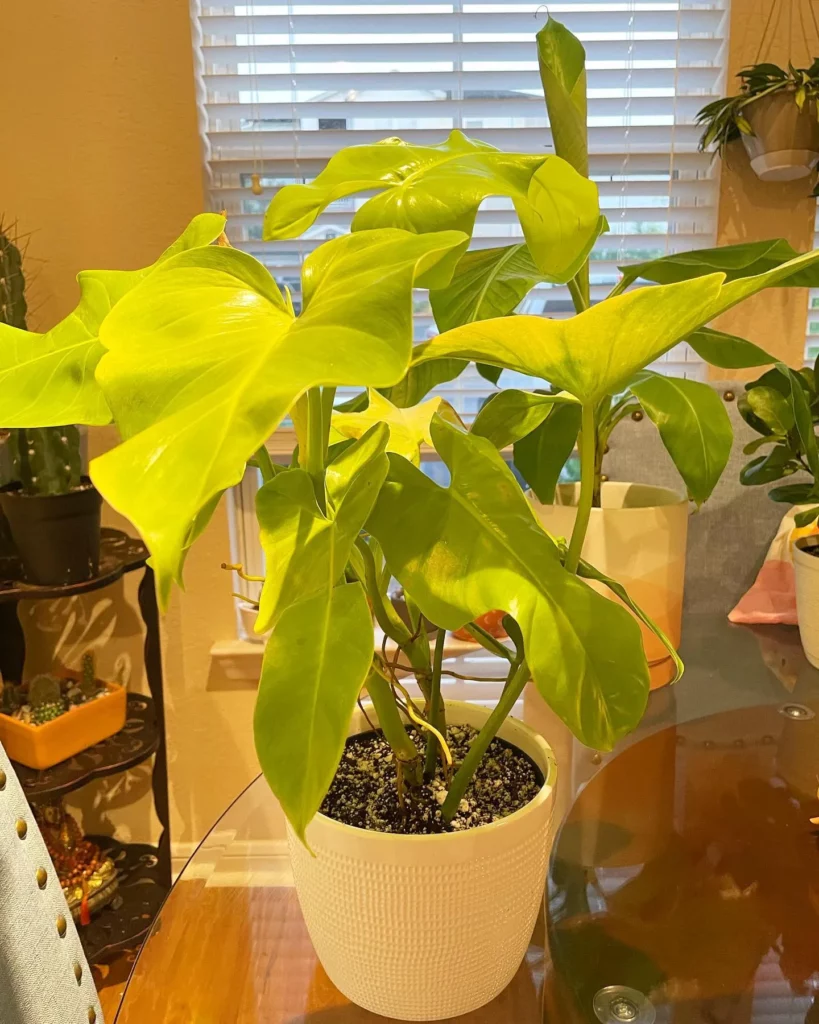
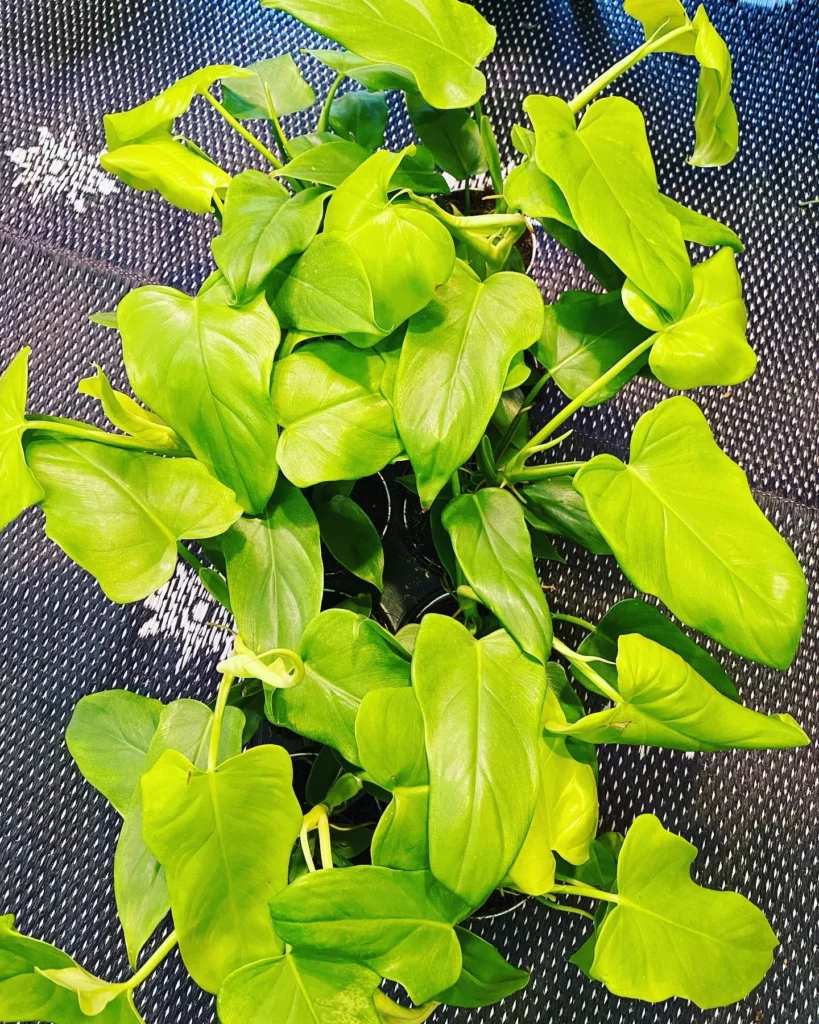

Trailing or hanging philodendrons are the perfect choice for adding lush greenery to your hanging baskets. These varieties, such as the Brasil and the micans, have trailing growth habits that gracefully cascade over the sides of the baskets, creating a stunning display.
Hanging baskets with trailing philodendrons thrive when placed in locations with medium to bright indirect light. These plants prefer high humidity, so it’s important to provide adequate moisture or consider using a humidifier in drier environments.
When choosing hanging baskets for your philodendrons, ensure they have well-drained soil and proper drainage to prevent waterlogging, which can lead to root rot.
Philodendron Varieties with Unique Leaf Colors

Some philodendron varieties stand out for their unique leaf colors. The pink princess philodendron features variegated leaves in shades of pink, while the Prince of Orange has leaves that emerge bright orange and mature to a light green. The imperial green and red varieties have leaves that change color as they mature, ranging from bright red to dark glossy green. The black cardinal has dark burgundy-black leaves, and the silver leaf philodendron has olive green leaves with silver markings. These vibrant leaf colors add a pop of color to any philodendron collection.
| Philodendron Variety | Leaf Color |
|---|---|
| Pink Princess | Variegated – shades of pink |
| Prince of Orange | Bright orange to light green |
| Imperial Green | Changes from bright red to dark glossy green |
| Red | Changes from bright red to dark glossy green |
| Black Cardinal | Dark burgundy-black |
| Silver Leaf | Olive green with silver markings |
Philodendron Varieties for Small Spaces



If you have limited space, there are philodendron varieties that are well-suited for small living quarters. The Xanadu and the esperanza philodendrons have compact growth habits and are perfect for smaller containers. These varieties can adapt to various conditions and are relatively low-maintenance. The compact size of these philodendrons makes them ideal for apartment living or for adding greenery to small office spaces. Despite their small stature, these philodendrons still offer the same beauty and lush foliage as their larger counterparts.
| Philodendron Variety | Growth Habit | Container Size | Maintenance Level |
|---|---|---|---|
| Xanadu Philodendron | Compact | Small | Low |
| Esperanza Philodendron | Compact | Small | Low |
Philodendron Varieties with Unique Variegation Patterns

Variegation is a desirable trait for many plant enthusiasts, and philodendron varieties with distinct variegation patterns are highly sought after. These variegated philodendrons add a touch of visual interest and intrigue to any plant collection. Let’s explore some of these unique varieties:
| Philodendron Variety | Variegation Pattern |
|---|---|
| Birkins Philodendron | White and bright yellow striped variegation |
| Brazil Philodendron | Bright green and yellow colors resembling the Brazilian flag |
| Brandtianum Philodendron | Olive-colored leaves with silver markings |
| Micans Philodendron | Velvety textured leaves in varying shades of green and purple |
These philodendron varieties exhibit unique variegation patterns that make them stand out. The Birkins philodendron showcases white and bright yellow striped variegation, creating a striking visual contrast. On the other hand, the Brazil philodendron features vibrant green and yellow colors reminiscent of the Brazilian flag, adding a tropical flair to any space. The Brandtianum philodendron boasts olive-colored leaves with silver markings, giving it an elegant and sophisticated look. Lastly, the micans philodendron displays velvety textured leaves in shades of green and purple, creating a mesmerizing visual effect.
Philodendrons with Impressive Leaf Sizes



Looking for philodendron varieties that make a bold statement in any space? Look no further than the billietiae and bipinnatifidum. These stunning plants produce leaves that can reach up to three feet in length, creating a dramatic and tropical look that is sure to catch your eye. The bipinnatifidum, in particular, can grow even taller when cultivated outdoors, reaching heights of up to 15 feet in its natural habitat.
With their large and impressive leaves, these philodendron varieties add a touch of grandeur to any indoor or outdoor setting. The billietiae and bipinnatifidum truly stand out among other houseplants, making them perfect focal points for your philodendron collection or garden landscape.
Whether you’re a plant enthusiast or a beginner gardener, these philodendrons with impressive leaf sizes will not disappoint. Their lush foliage and tropical vibes will transform your space into a vibrant and inviting oasis. Embrace the beauty of nature with these magnificent philodendron varieties and let their large leaves take center stage.
FAQ
What does a philodendron look like?
Philodendrons are tropical plants with lush leaves in various shapes, sizes, and colors. They can be climbing or upright, and their leaves can range from green to variegated, with some varieties featuring vibrant hues like pink and orange.
What are the popular philodendron varieties for beginners?
Some popular philodendron varieties for beginners include the heartleaf philodendron, philodendron hope selloum, imperial green philodendron, Prince of Orange philodendron, “pink princess” philodendron, philodendron Brasil, and micans philodendron.
What are some unique philodendron varieties for collectors?
Collectors of philodendrons may be interested in unique varieties like the Birkins philodendron, black cardinal philodendron, Bob Cee philodendron, Brandtianum philodendron, and Brazil philodendron.
What are the leaf shapes and textures of philodendrons?
Philodendrons have a variety of leaf shapes and textures, including heart-shaped leaves, leaves resembling a horse’s head or violin, leaves with a thicker, waxy feel, strap-shaped leaves, and large glossy green leaves with white veins.
What are the growth habits and new foliage of philodendrons?
Philodendrons have different growth habits, with some extending new leaves from a current leaf and others extending new leaves on a vine in a cataphyll. New leaves on a philodendron can have a pink or brownish tint before darkening to their true color.
How should I care for philodendrons?
Philodendrons prefer partial sun exposure and bright, indirect light. They thrive in a warm, humid environment and prefer loamy, well-drained soil. Philodendrons should be watered moderately, with attention to drooping leaves as a sign of over- or under-watering. Regular fertilization and pruning can also help keep them healthy.
What are the best environments for philodendrons?
Philodendrons are tropical plants and thrive in warm, humid environments. They can be grown indoors with the right light and environmental conditions, and outdoor cultivation is possible in climate zones 9 to 11 with protection from freezing temperatures.
Do philodendrons purify the air?
Yes, philodendrons have air-purifying properties and can help remove harmful toxins from the air. They release moisture into the air, acting as natural humidifiers, and can also reduce levels of indoor air pollutants like formaldehyde, benzene, and trichloroethylene.
Can I grow philodendrons in outdoor gardens?
Some philodendron varieties are suitable for outdoor cultivation in warmer climates. Varieties like the bipinnatifidum and bipennifolium can grow quite large and make a statement piece in garden landscapes.
Which philodendron varieties are suitable for hanging baskets?
Trailing or hanging philodendrons like the Brasil and micans varieties make beautiful additions to hanging baskets. They thrive in medium to bright indirect light and prefer high humidity.
Are there philodendron varieties with unique leaf colors?
Yes, there are philodendron varieties with unique leaf colors. The pink princess philodendron, Prince of Orange philodendron, imperial green and red varieties, black cardinal philodendron, and silver leaf philodendron all feature leaves in vibrant or distinct colors.
Are there philodendron varieties for small spaces?
Yes, philodendron varieties like Xanadu and esperanza have compact growth habits and are well-suited for smaller living quarters or adding greenery to small office spaces.
Are there philodendron varieties with unique variegation patterns?
Yes, there are philodendron varieties with unique variegation patterns. The Birkins philodendron has white and bright yellow striped variegation, while the Brazil philodendron has bright green and yellow colors resembling the Brazilian flag.
Are there philodendrons with impressive leaf sizes?
Yes, some philodendron varieties have impressive leaf sizes. The billietiae and bipinnatifidum can produce leaves that reach up to three feet in length, creating a dramatic and tropical look.


